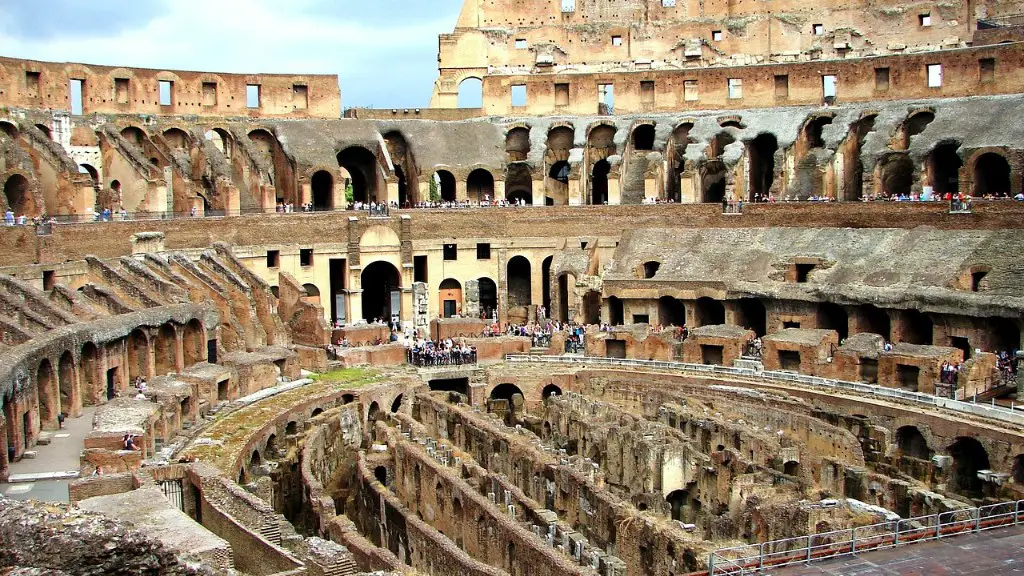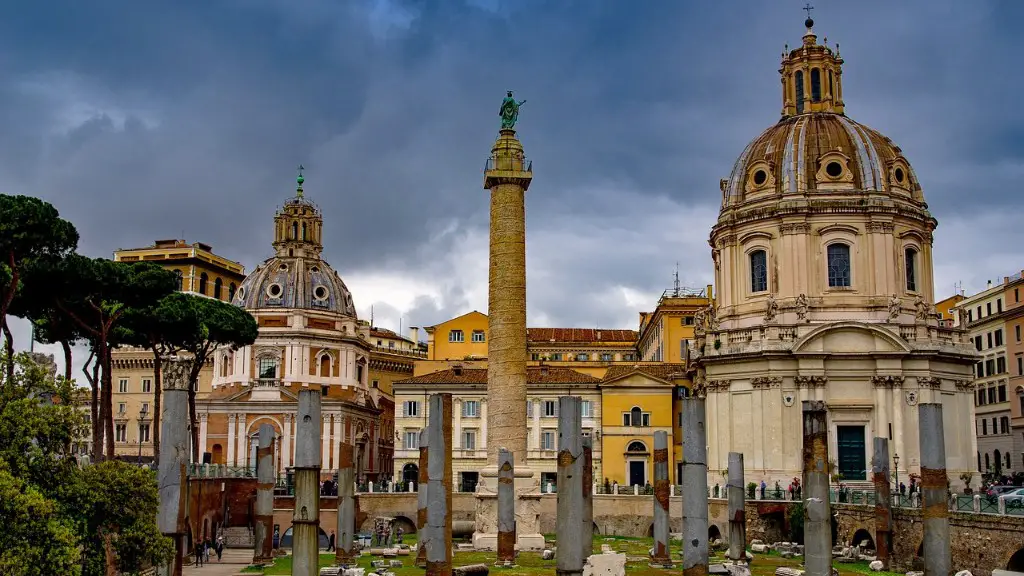What was Ancient Rome Built
Ancient Rome, often called the Eternal City, was founded around 753 BC. The city was originally built on seven hills around the River Tiber and was ruled by Etruscan kings for a brief period before succumbing to a Republic where citizens voted for their leaders. Over the next 700 years, Ancient Rome slowly developed from a small trading city to one of the most powerful empires in the world. It has remained one of the greatest cities in history, influencing modern day art, culture, architecture, law and government.
The city of Ancient Rome was known for its sophisticated and highly advanced engineering techniques and infrastructure that enabled it to be built on the marshy ground between the hills. Roman engineers had the know-how to build aqueducts that supplied water uninterruptedly to the city and a large sewer system to dispose of waste and greywater properly. A network of roads linked the towns and outposts of the Roman Empire, giving Rome a much needed economic boost.
The city itself was divided in two main sections, the seven hills and the famous centre, the Forum Romanum. This large rectangular square was the hub of ancient Roman life, filled with important temples and public buildings that were used for military and political events. The centre of the Forum is the Sacred Way which was flanked by colonnades and decorated with statues of gods and former rulers.
Its development was not just limited to infrastructure. Ancient Rome was also renowned for its art, literature, and philosophy. Rome witnessed the birth of poets like Virgil and Martial whose extraordinary poetic works are still studied today. Its monuments which still stand today, like the Coliseum and the Pantheon, demonstrate not just the engineering brilliance but also the grandeur of the city.
The last three centuries of Ancient Rome were sometimes chaotic due to political rivalries, military campaigns and rival nations, yet the city is still considered to be the most powerful city in history. It is noted for its strong political system, law-making traditions and its powerful military.
The Governance of Roman Empire
In the early years of the Republic, Ancient Rome was ruled by a senate of Patricians, or wealthy land-owning citizens – a robust form of rule that emphasised the rule of law and ensured peace and stability in the empire. This system of governance was further strengthened by Julius Caesar and Augustus, who gave more power to the senate by introducing popular elections and engaging citizens in decision-making processes.
In terms of taxation, Ancient Rome focused on reaching out to citizens in the provinces and cities to encourage revenues. The administrators in these cities were taxed, and then passed on the money to Rome in the form of tribute. This system of taxation, combined with the wealth and resources of the people, enabled Rome to become the capital of the empire.
The Spread of the Roman Empire
The Mediterranean was the main source of Ancient Roman power, allowing them to establish trade networks with other civilizations such as the Greeks, Carthaginians and Egyptians. This was also the area in which Rome began to expand its borders. In some cases, the expansion was through diplomatic agreements, courtesies and treaties, while in other cases Rome outright conquered the other nations in the area.
As Rome established itself as the dominant superpower in the region, it spread its influence, culture and language into many countries, including England, France, Germany and in particular the area now known as the Middle East. This expansion created the Greco-Roman world, a collective of nations that spoke the same language and had similar laws, thus leading to a stable environment in which trade, travel and commerce could thrived.
The Fall of Ancient Rome
The decline and fall of Ancient Rome has been the subject of much debate and speculation. Many historians and writers have tried to explain what happened, but the actual events are still shrouded in mystery.
There is much evidence to suggest that the fall can be attributed to a combination of factors, including external invasions, economic problems, social unrest and famines, as well as political ineffectiveness and religious changes. The loss of confidence in the political and social structure of the Roman Empire was a major factor, as was the inability of the leaders to deal with the impacts of excessive Roman expansion.
Legacy of Ancient Rome
The legacy of Ancient Rome is hard to overestimate. Its innovations in engineering, architecture, law and governance continue to influence the modern world today.
One of the most visible legacies of Ancient Rome is that many of its monuments are still standing today and provide visitors with an insight into the grandeur of the city and its Empire.
Ancient Rome’s language, Latin, is also still spoken today in various forms and is the source of many European languages, such as Spanish, French and Italian. Its laws, such as the Twelve Tables, are still a source of legal reference and influence present-day justice systems.
The Importance of Ancient Roman Culture
It’s no surprise that Ancient Rome had a profound influence on our culture today. Its literature, art, philosophy and architecture is still admired and studied by scholars the world over.
Roman philosophy, especially Stoicism, is still incredibly relevant to this day, and its literature and poetry have inspired writers and thinkers across the ages. Its stunning monuments stand testament to the importance and legacy of the Roman Empire.
The Impact of Ancient Rome On Architecture
The impact of Ancient Rome on modern architecture is hard to ignore. Most notably, its sculptures, columns, arches, aqueducts and domes have been adopted by architects in modern times and can be seen in grand public buildings and monuments throughout major cities today.
Roman architecture has come to define how we build structures today and its influence has been adopted worldwide. Its focus on harmony and proportion, the use of space and its sophisticated engineering techniques have made it a template for modern architects.
The Importance of Ancient Roman Teachings
The teachings of Ancient Rome, especially in terms of law, remain important and influential today. In particular, its civil law is seen as the foundation of law in many countries, for example in France and some parts of the United States.
The Roman doctrine of stare decisis, which advocated for rule-based decisions, is still used in many modern legal systems today. Further, the Twelve Tables – the earliest code of Roman law – serves as the foundation for most of the modern laws in the West today.
Modern Impact of Ancient Roman Religion
Although today most countries have adopted different religions, traces of Ancient Roman religions still remain in modern culture and law.
The Roman gods and goddesses of the pantheon, such as Jupiter, Mars and Juno, still appear in modern names and terms. Given that Ancient Rome was a polytheistic culture, its religious beliefs also emphasised the importance of many gods and goddesses, rather than just one.
Additionally, many of our fundamental philosophical and ethical values, such as justice and honesty, have their roots in Ancient Roman religion. Its religious practices, such as the communion of bread and wine, are still used in other religious ceremonies today.


